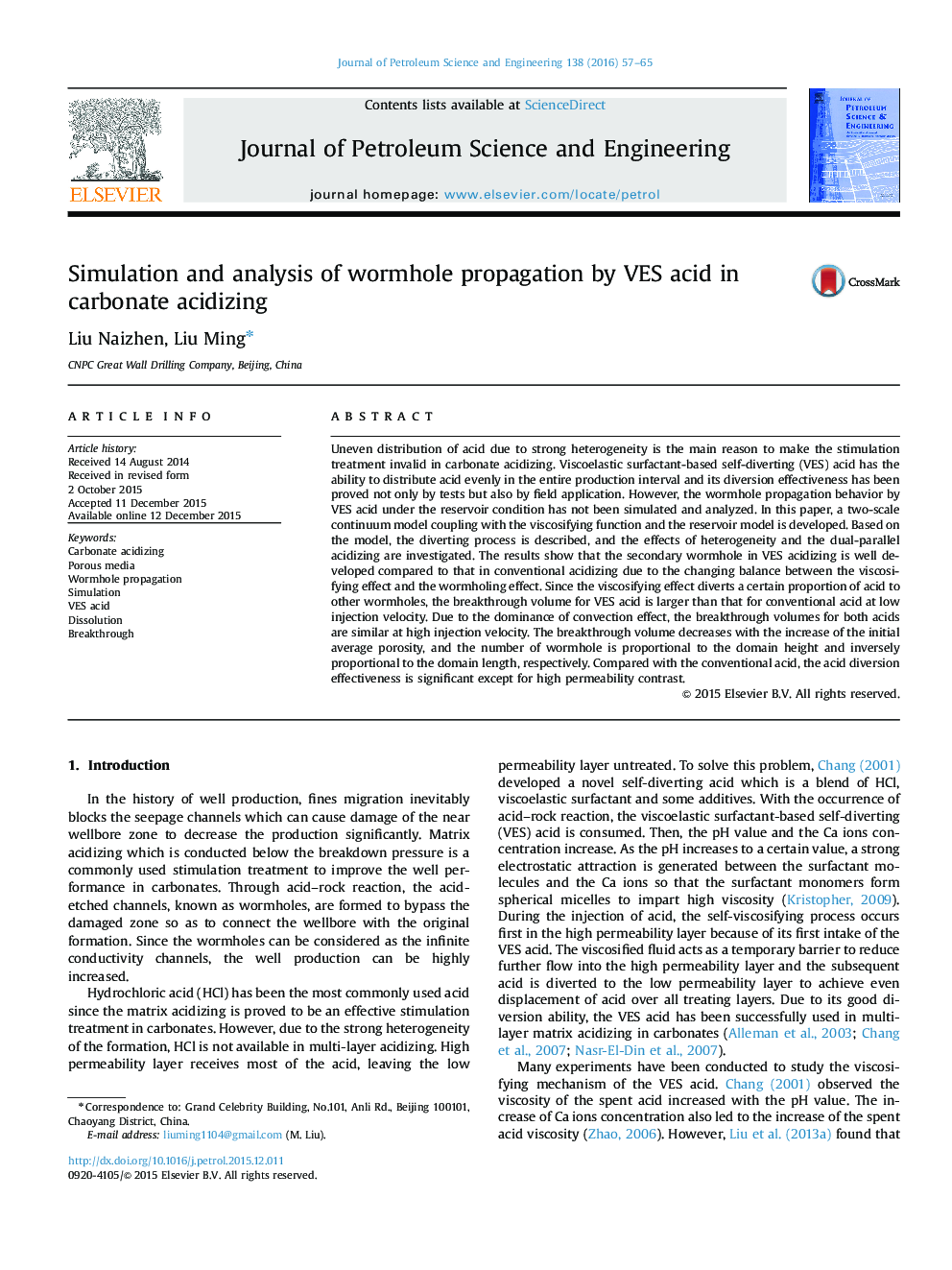| Article ID | Journal | Published Year | Pages | File Type |
|---|---|---|---|---|
| 8126278 | Journal of Petroleum Science and Engineering | 2016 | 9 Pages |
Abstract
Uneven distribution of acid due to strong heterogeneity is the main reason to make the stimulation treatment invalid in carbonate acidizing. Viscoelastic surfactant-based self-diverting (VES) acid has the ability to distribute acid evenly in the entire production interval and its diversion effectiveness has been proved not only by tests but also by field application. However, the wormhole propagation behavior by VES acid under the reservoir condition has not been simulated and analyzed. In this paper, a two-scale continuum model coupling with the viscosifying function and the reservoir model is developed. Based on the model, the diverting process is described, and the effects of heterogeneity and the dual-parallel acidizing are investigated. The results show that the secondary wormhole in VES acidizing is well developed compared to that in conventional acidizing due to the changing balance between the viscosifying effect and the wormholing effect. Since the viscosifying effect diverts a certain proportion of acid to other wormholes, the breakthrough volume for VES acid is larger than that for conventional acid at low injection velocity. Due to the dominance of convection effect, the breakthrough volumes for both acids are similar at high injection velocity. The breakthrough volume decreases with the increase of the initial average porosity, and the number of wormhole is proportional to the domain height and inversely proportional to the domain length, respectively. Compared with the conventional acid, the acid diversion effectiveness is significant except for high permeability contrast.
Related Topics
Physical Sciences and Engineering
Earth and Planetary Sciences
Economic Geology
Authors
Liu Naizhen, Liu Ming,
